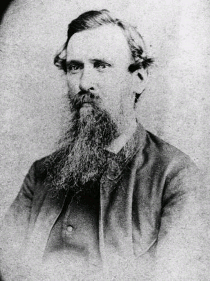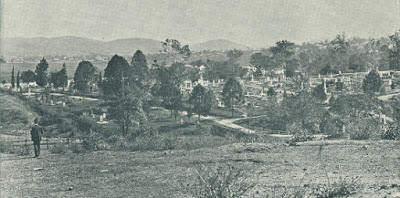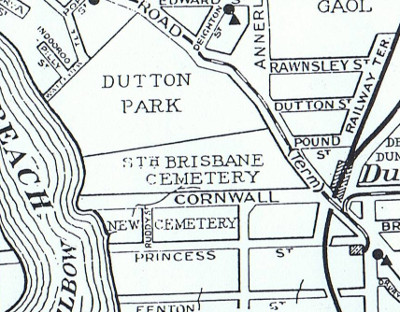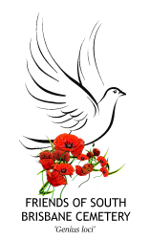Cemetery History
Before the 1860s, the area now known as Dutton Park was originally thickly timbered and cut by steep gullies. A rough track from Woolloongabba to Ipswich passed through it. Some farms were established in the 1840s, the road was surveyed, but there were few houses. The wider area was surveyed in 1863, and a large recreation reserve was set aside, which was later divided into recreation and cemeteries reserves.
The Cemetery Act of 1865 allowed the Queensland government to set up general cemeteries under the control of local trustees. In January 1866 TB Stephens, AJ Hockings, WT Blakeney, WM Baynes and J Mooney were appointed as trustees for a new South Brisbane Cemetery.

The land they selected for the new cemetery in March 1866 was described in a newspaper as being “eighteen acres on the old Ipswich road, about a mile and a-half from the city, and extending from the road down to the Brisbane River at Oven’s Head. From its position, there is no danger of its ever being surrounded with houses, and the access from the river makes it available for the large population settled on Oxley Creek and both sides of the Brisbane River.”
The trustees adopted regulations for South Brisbane Cemetery in October 1866, but it still needed fencing, clearing, and internal roads, and it was almost four years before it was ready to be proclaimed open for use, which happened on 7 May 1870.

The first recorded burial took place 1 August 1870 when Jane Hockings – the mother of trustee Albert Hockings – was laid to rest in section 8A. The interment of such a prominent person was a significant moment, and for the first time large numbers of southsiders began to utilise a cemetery on their own side of the river. It has always officially been named ‘South Brisbane Cemetery’, as it was in South Brisbane – which was a separate municipal entity to Brisbane itself – although many people know it by the colloquial name of ‘Dutton Park Cemetery’.

Improvements were made during the 1880s with the erection of a caretaker’s cottage and entrance gates, railings and a boundary wall. The cemetery was full by 1903, and so the reserve was expanded by seven acres on the south side of Cornwall Street, reaching what is now Princess Street.
The newly-established Greater Brisbane Council assumed the management of public cemeteries from the trustees in 1930 owing to financial difficulties with the cemetery. It was once again almost full, and the remnant stretch of Cornwall Street inside the cemetery was closed in 1930 to create more burial space. Demand for new graves declined around this time as the new cemetery at Mt Gravatt was well established, and cremation was introduced in Queensland and quickly became the preferred funerary choice for many people.

New pathways were laid in the cemetery during the 1930s by the ‘unemployed workers relief fund’, and the Brisbane City Council embarked on an extensive programme of works at the cemetery in 1939, including more concrete paths, upgrading of internal roads, the installation of kerbing, 20 metres of new stone wall, and a new chain wire fence erected from the existing iron railings in Cornwall Street to the cemetery corner.
Two modern brick toilet blocks were constructed in 1941. A post-war survey of the cemetery noted two shelter sheds, a timber caretaker’s cottage, a timber tool room, motor shed and men’s room, and in 1954 a brick staff amenities block was constructed, with the large green brick shed going up shortly afterwards. Sadly, the shelter sheds have not survived, the caretaker’s cottage burned down in 1996, and one of the toilet blocks was demolished after a fire in 2013.
The cemetery was full by 1961 and closed to burials in new graves, although interments could still take place in existing family plots (although a small number of new plots were released in later years). Lawn cemeteries were now coming into vogue and South Brisbane was seen as something of a historical relic.
During the 1970s the Brisbane City Council so-called ‘beautification scheme’ resulted in the removal of thousands of headstones deemed to be ‘unsightly’ or ‘dangerous’ (you can read more about that here). The plan was to allow the heritage fabric of the cemetery to gradually fade away, but over the following decades there was increased public appreciation of local heritage, and family historians took renewed interest in the residents of the cemetery, many of them installing new grave markers. The cemetery was listed on the Queensland Heritage Register in 2003, and the Friends of South Brisbane Cemetery was formed by volunteers in 2005. Since that time there has been a massive upturn in research and protection of the cemetery, new grave plots have opened up, and the future of the cemetery now seems assured.


